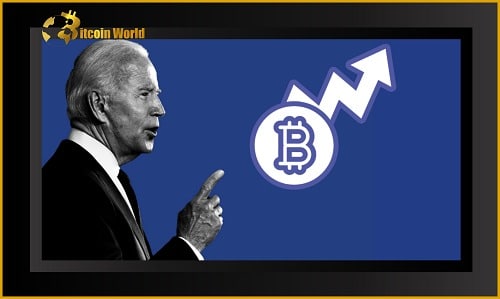The crypto world is buzzing with reactions to President Biden’s recent executive order on digital assets, and surprisingly, the overwhelming sentiment is positive. Instead of the feared crackdown, it appears the administration is taking a more measured and innovation-focused approach. Let’s dive into what this means for the future of cryptocurrency in the US and globally.
A Sigh of Relief and a Nod to Innovation
Treasury Secretary Janet Yellen’s statement on March 9th perfectly encapsulates the tone: collaboration and managed risk. She highlighted the administration’s commitment to working with various departments to both foster innovation and mitigate potential risks within the digital asset space. This wasn’t the punitive action many in the crypto industry had braced for, especially given recent government scrutiny. It seems the White House is choosing dialogue and strategic development over outright antagonism – a welcome shift for crypto enthusiasts and businesses alike.
Adding to the positive chorus, pro-crypto Republican Senator Tom Emmer voiced his support, emphasizing the need for a national policy that champions digital asset innovation. His perspective underscores a growing bipartisan understanding of crypto’s potential.
The Executive Order: Sound Findings and National Interest?
Senator Emmer believes the executive order is built on a solid foundation, recognizing the national interest in supporting the burgeoning digital asset sector. He pointed out that the core focus areas of the directive are crucial for responsible growth:
- Consumer Protection: Ensuring users are safeguarded within the crypto ecosystem.
- Systemic Risks: Managing potential risks that crypto could pose to the broader financial system.
- Global Competitiveness: Positioning the US as a leader in the digital asset space internationally.
- International Standards: Collaborating globally to establish consistent and effective regulations.
- Resilience of Code (Guardrails): Focusing on the security and robustness of the underlying technology.
These points signal a comprehensive approach aimed at fostering a healthy and sustainable crypto environment rather than stifling it.
Decentralization: A Key Aspect Not Explicitly Mentioned?
Interestingly, Senator Emmer noted the absence of explicit mention of “decentralization” in the executive order. He highlights the importance of decentralization and the “disintermediation of the economy” that crypto enables. This shift towards decentralization has the potential to empower individuals beyond traditional financial gatekeepers.
What does this mean for the average American?
It suggests a future where individuals have more control over their financial destinies, beyond the reach of just banks, tech giants, and government entities. Decentralization could democratize finance, offering greater access and autonomy.
SEC’s Absence: A Deliberate Omission?
Another noteworthy aspect of the executive order is the apparent lack of direct input from the Securities and Exchange Commission (SEC). This is seen by some as a positive sign. The SEC’s approach to crypto regulation has often been perceived as enforcement-heavy and sometimes unclear. Perhaps the administration is seeking a more balanced perspective by not prioritizing SEC feedback in this initial directive.
CBDCs and Concerns of Centralized Control
Senator Emmer has been a vocal critic of a Federal Reserve-controlled Central Bank Digital Currency (CBDC). He’s previously warned against the potential for a CBDC to mirror China’s system of centralized financial control, raising concerns about privacy and government overreach. The executive order’s approach will likely be closely watched for any indications of leaning towards or away from a US CBDC.
Industry Experts Weigh In: A Positive First Step
Jerry Brito, Executive Director of Coin Center, a prominent crypto think tank, echoed the positive sentiment. He views the executive order as a constructive step forward for the industry. This endorsement from a leading voice in the crypto policy space further validates the order’s generally well-received nature.
Market Reaction: Initial Euphoria Followed by Reality Check
The immediate aftermath of the executive order saw a surge of optimism in crypto markets. However, this initial euphoria proved to be short-lived. The market soon resumed its downward trend, highlighting the complex interplay of factors influencing crypto prices beyond just regulatory news.
As of writing, the total crypto market capitalization had decreased by 2.8% to $1.83 trillion. The sell-off intensified the following morning, with Bitcoin (BTC) and Ethereum (ETH) experiencing significant drops. This serves as a reminder of the crypto market’s volatility and sensitivity to broader economic trends.
Key Takeaways:
- Biden’s executive order is largely seen as a positive development by the crypto community.
- It signals a focus on innovation and managed risk rather than outright prohibition.
- Key areas of focus include consumer protection, systemic risk management, and global competitiveness.
- The absence of explicit decentralization mention and SEC feedback are notable points of discussion.
- Market reaction was initially positive but quickly tempered by broader market forces.
What’s Next?
The executive order is just the beginning. The coming months will be crucial to observe how different government agencies interpret and implement these directives. The crypto industry will be keenly watching for concrete policy proposals and regulatory frameworks that emerge from this initial step. Will this executive order truly pave the way for responsible crypto innovation in the US? Only time will tell, but the initial signs are encouraging.
Related Posts – Ferrari joins the NFT universe through a collaboration with a Swiss…
Disclaimer: The information provided is not trading advice, Bitcoinworld.co.in holds no liability for any investments made based on the information provided on this page. We strongly recommend independent research and/or consultation with a qualified professional before making any investment decisions.


